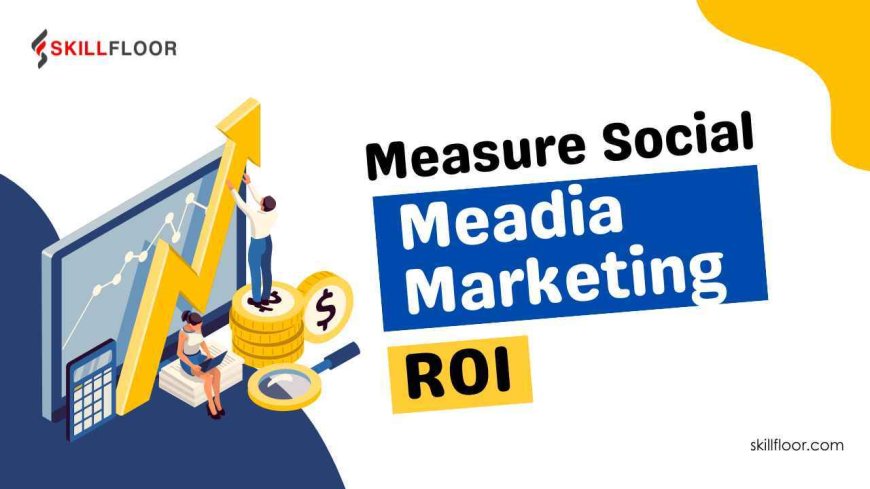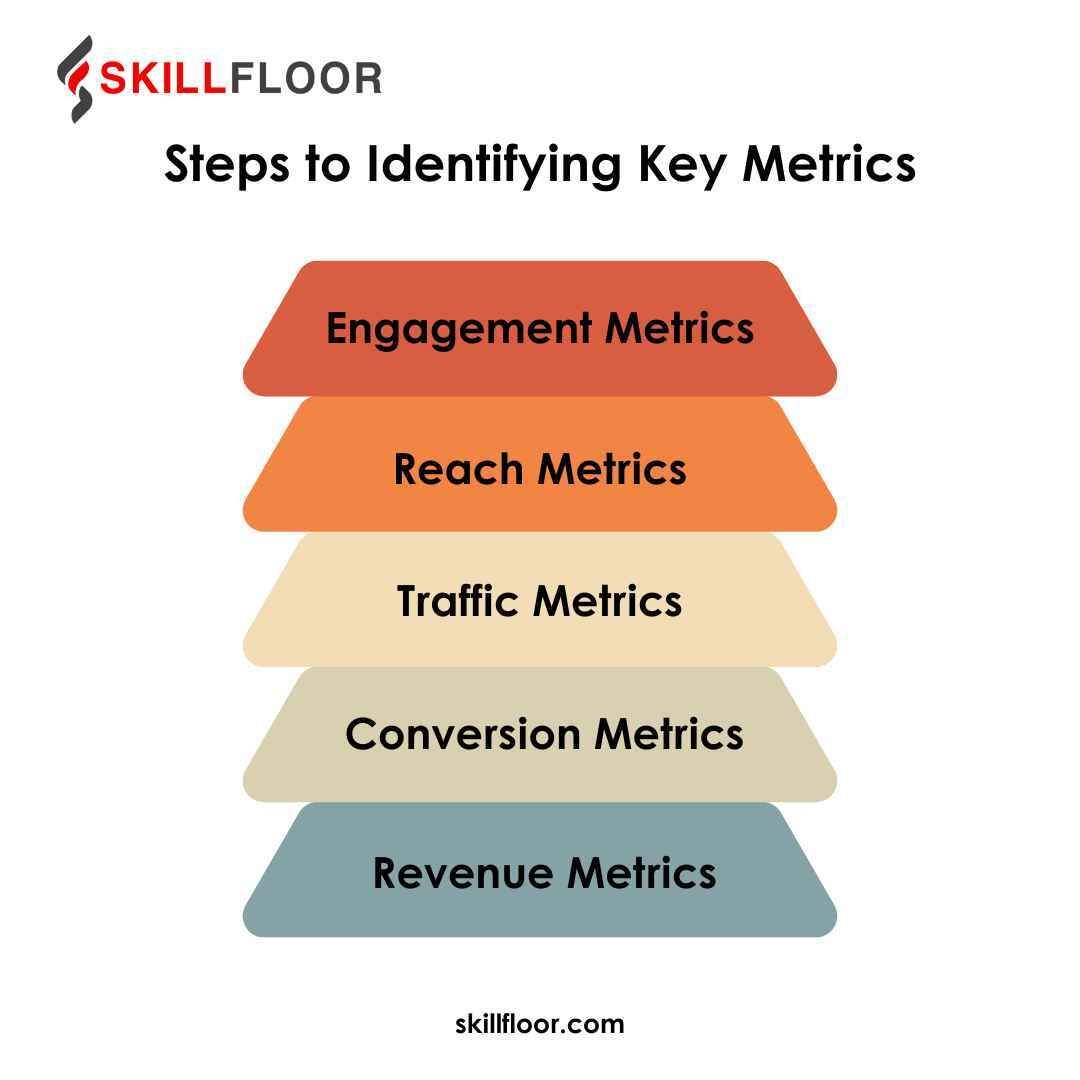How to Measure Social Media Marketing ROI
Discover effective strategies for measuring Social Media Marketing ROI. Learn key metrics and tools to optimize your digital marketing efforts.

Anyone entering into the field of social media marketing must know How to Measure Social Media Marketing ROI. It's important to know what works and what doesn't in addition to simply transferring content. By using social media analytics tools, you can monitor the progress of your social media marketing campaigns and get a clear image of their efficacy. Measuring social media engagement allows you to understand how your audience responds to your postings, which is a really useful insight. By calculating the return on investment (ROI) of your social media strategy, you can make informed decisions about how best to use your time and resources. Earning likes and shares is only one aspect of social media marketing; the other is analyzing the effectiveness of your efforts and making improvements to achieve better results. Social Media Marketing can significantly increase your company's development and reach using the proper tools and strategy.
Understanding Social Media Marketing ROI
Let's start with defining social media marketing return on investment. Return on Investment, or ROI, is an essential measure of the success of your marketing campaigns. ROI is a term used in social media marketing that compares the value that you get out of your social media efforts to the expenses that you invest.
Consider it this way: You should want to know if the time, money, and resources you're investing into social media campaigns are paying off. This is where calculating the ROI for social media marketing becomes important. It gives you insights into what is and is not working in your social media marketing and helps you evaluate how effective it is.
Setting Clear Goals and Objectives
Before calculating your return on investment, you must establish certain goals and objectives. By establishing these objectives, you have a standard by which to evaluate your progress. If your goals are unclear, you'll be shooting in the dark.
Here's how to make goals that work:
Define Your Goals: What are your objectives for using social media marketing? Which is it sales, customer engagement, lead generation, or brand awareness?
Be Specific: Strive for measurable objectives like "gain 1,000 new Instagram followers in three months" rather than nebulous ones like "increase followers."
Make Them Measurable: Make sure you can quantify your objectives. As an illustration, "increase website traffic from social media by 20%."
Ensure They’re Achievable: Based on your resources and the state of the market, set reasonable targets.
Relevance is Key: Your aims should be in line with your company's overarching ambitions.
Time-Bound: To stay motivated and track your progress, give your goals deadlines.
Identifying Key Metrics
Establishing the important KPIs that will enable you to calculate the return on investment from your social media marketing comes next. Depending on your goals, these measurements will change but often consist of:

Engagement Metrics: Likes, shares, comments, retweets, and other interactions are examples of engagement metrics. Understanding how your audience is reacting to your content requires measuring social media engagement.
Reach Metrics: The number of distinct users who have viewed your material. This aids in measuring the awareness that your campaigns have raised.
Traffic Metrics: Clicks through to your website, landing pages, or blog articles are measured by traffic metrics. This gauges the amount of direct traffic generated by your social media marketing.
Conversion Metrics: User actions, including sign-ups, downloads, purchases, or form submissions, that occur after they interact with your content.
Revenue Metrics: A crucial component in determining the financial impact of social media initiatives is the amount of income produced.
Tracking and Collecting Data
The basis of social media marketing ROI measurement is data. Reliable data are necessary for analysis and generating insightful results. This is the method to follow:
Use social media analytics tools: Sites like LinkedIn Analytics, Instagram Insights, Twitter Analytics, and Facebook Insights offer insightful information about your success on social media.
Google Analytics: This is an effective tool for monitoring traffic to websites and conversions from social media platforms.
Third-Party Tools: You may streamline your data collection process by utilizing tools like Hootsuite, Sprout Social, and Buffer, which provide comprehensive analytics and reporting options.
Manual Tracking: You might manually track analytics for smaller campaigns by gathering data from various sources using spreadsheets.
Calculating Social Media ROI
This is the time to start doing the calculations. Comparing the cost of your efforts to the value they produce is the first step in calculating ROI for social media marketing. Here's a simple formula to figure out ROI:
ROI = (Amount Gained - Amount Spent)/ Amount Spent x 100
For example, if you spent $1,000 on a social media campaign and generated $3,000 in sales, your ROI would be:
ROI = (3000-1000/1000) x 100
This means you earned a 200% return on your investment, indicating a highly successful campaign.
Interpreting and Analyzing Results
To fully understand the impact of your social media marketing, you have to evaluate your data since numbers don't always tell the whole story. To determine if you met, exceeded, or fell short of your goals, start by evaluating your performance about them. This will help you determine your level of success overall. Analyze your data for patterns and trends to determine which tactics are most effective. By analyzing how your audience interacts with your material, you can learn about their preferences and habits through behavior analysis. Ultimately, comparing your performance to industry norms gives you a better idea of where you stand and where you may make improvements by letting you know how you compare to rivals.
Optimizing Social Media Strategies Based on ROI
ROI measurement for social media marketing is a continuous process. It's a constant procedure that helps in the continued improvement of your tactics. Based on ROI insights, you can optimize your social media marketing as follows:
Double Down on Successful Strategies: Invest additional resources in content or campaigns that are yielding a high return on investment.
Tweak Underwhelming Campaigns: Determine your areas of weakness and make the required corrections. This could entail utilizing several platforms, modifying your content, or focusing on distinct consumers.
Try new ideas and be innovative: Don't be scared to take risks. Trying out various forms, approaches, and tactics can lead to the discovery of fresh development prospects.
Allocate Budget Efficiently: Assign funds to the most successful campaigns and channels by using your ROI statistics.
calculating the return on investment from social media marketing is crucial to understanding the effectiveness of your work and refining your tactics. You may increase the efficacy of your campaigns by making well-informed decisions through goal-setting, key metric identification, data tracking, ROI calculation, and result interpretation. You can make sure that your social media marketing makes a big difference in your business's performance by continuously improving your strategy in light of ROI insights.




























































